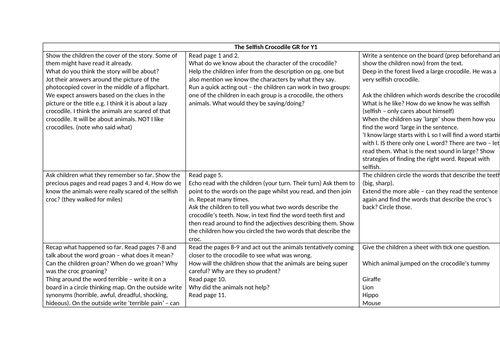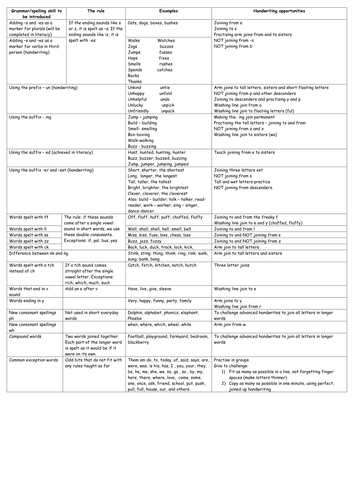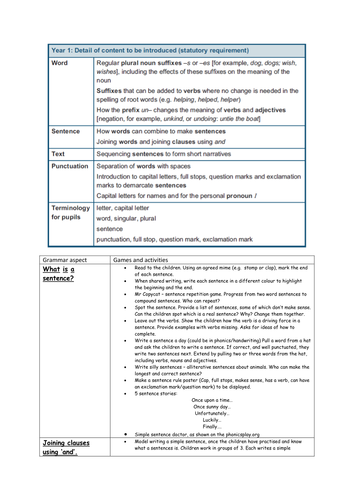12Uploads
103k+Views
140k+Downloads
English language arts

Dear Mother Goose writing unit for Year 1/2
This unit is based on a great children’s book by Michael Rosen ‘Dear Mother Goose’. It covers National Curriculum objectives for writing and is a great starter unit/perfect for a lower ability class. It assumes children have some knowledge of Colourful Semantics but this can be easily omitted. The unit has been written mainly for year 1 but it has some ideas and the potential to cover some of the year 2 objectives as well. The idea is, we read the whole book to the class but then focus on one nursery rhyme as a model. Text maps have been provided for two of the rhymes - Incey Wincey Spider and Little Miss Muffet.
The pack contains a powerpoint with notes for teaching, two activity sheets for two of the lessons and two story maps (T4W style). Each teacher will need to adapt the slides to their class, especially in the indpendent writing stage, where only master slide for sentence doctor has been provided. The starting slides have been designed specifically for my class, who stuggled with transcription, spelling and phonics. Those will need to be amended for your class.

Dragons information text Year 1
This non-chronological report is suitable for a year 1 or 2 class. With minor adjustments, it could easily be used for less confident year 3 class also.
It could be used as a non-fiction unit to follow from the ‘Kassim and The Greedy Dragon’ text often used in KS1.
I included a text map, the text, planning for the immersion phase and boxing up to aid in the guided writing phase. I also wrote an innovated text that could be used as a class example. There are two examples of comprehension questions to check the childrens’ understanding of the text.

Buy a Talking Papaya! Persuasion unit KS1 Talk for Writing Method
A non-fiction unit to follow the lovely story of ‘The Papaya That Spoke’ - but could easily be adopted to any talking object/any item!
The unit includes the text map, an idea for an open-ended initial assessment task, planning for immersion, simple boxing up and a ready-to-print powerpoint of pictorial vocabulary. I also included two ideas for innovation - one holding quite close to the idea of a talking item, the other veering into a more general advertising. Hugely successful in our Y1 and Y2 classes, as it has the scope for extending the sentence structures depending on writing experience of the children.
It is a simple and clear model that could be used for LKS2 classes with the view to extending and making it more complex at the innovation stage.

KS1 Persuasion Talk for Writing Method 'Grow Wonderful Weeds in Your Garden Today'
Persuasion in KS1 isn’t always easy. I wrote this unit for KS1 but also included a version of it for Reception class as we had a mixed year group.
As with any non-fiction text, the main content can easily be changed to fit with any topics discussed at school.
The resource includes the text, pictorial text map, planning for KS1 with variations for less confident writers - imitation and innovation, vocabulary pictures to display, worksheets for short-burst writing and boxed up model. I also included photos of the flipcharts and children’s work from my classroom (year 1 and year R).

How to re-style a Christmas elf? INSTRUCTIONS KS1 Talk for Writing method
A Christmas themed instructions text, complete with planning, text map, boxing up grids and innovation planning map. Also included is an example of a specific instructions toolkit, including the pictorial ‘every time we write’ toolkit for KS1 (at the bottom of the toolkit poster). Pictorial vocabulary also included, ready to print. The unit ends with a reading questions accessible to both Y1 and Y2 (test style format for those) to check the comprehension of the text.
This simple yet effective unit can be used as a non-fiction follow-up to The Elves and the Shoemaker story but can be taught as a stand-alone unit following the class reading of The Elves and the Shoemaker.
The boxing up grids can be used on a large flip chart with the whole class in Y1 but there is also an option for teaching individual boxing up to Y2 children, if required.
The planning follows the Talk for Writing principles but can be easily adjusted as a book-based literacy curriculum topic.
I included the story map and boxing up grids as photos of my flip charts so you have a template to follow when you draw your big maps.
The children will then use the map to plan their own instructions: I would encourage them to choose a magical character e.g. How to dress a winter fairy? How to trick a snow queen? How to help Father Christmas. However, you could imitate into something the children know well e.g. How to bake a Christmas cookie? or How to make a Christmas decoration?
Enjoy!

The Detective Dog Whole Class Reading Unit Y1
A simple study of Julia Donaldson’s book The Detective Dog, written for Y1 class.
The unit assumes a whole class story time - it provides precise questioning to stimulate discussion and support the children in the art of prediction, retrieval and inference.
The plan is complete with example activities which can be completed as a class or printed out as independent tasks.

Should children learn cookery at school? DISCUSSION TEXT Y2/3 LK2 T4W method
Should children learn cookery at school is a text I wrote and taught in a mixed Y2/3 class (very able). It teaches the children the main audience, purpose, key features and language of a discussion text, whilst providing opportunities for lots of talk and oracy activities. It is complete with vocabulary and reading tasks, a photo of a text map (boxed up in sentences for SEN support). This unit assumes basic principles of Talk for Writing, with the children orally rehearsing the text in order to assimilate the sentence structures. However, it can be used away from that assumption as a clear model for writing a discussion text.

List poem Y1/EYFS planning
This unit is designed for a mixed Y1/YR class with separate activities/writing opportunites for EYFS and KS1. I included a picture map of the poem, and an innovation map for children’s own planning. Some of the sessions can be omitted/extended - for example, the session on similes turning into metaphors can be split into two separate sessions and you could do a lot more rhyming.
I mention some powerpoints from Twinkl but others can be easily found online.
I am also including photos of our message centre that provided opportunities for independent writing in the continuous provision in Reception.

The Selfish Crocodile Reading Unit Y1/YR
This is a unit I designed for my split Y1/YR class. Y1 children struggled with their PiRA tests and lots of oral comprehensions mixed with teaching a question type at a time could be the answer. The unit can be used with Reception children also - the requirements of the new EYFS regarding discussion about characters is achieved whilst talking about the crocodile.
I planned this unit for an HLTA to run, for about 20 minutes a day for 6 weeks with a low Y1 class. I hope it is useful:)

Explanation text Y2 / 3 Talk for Writing method: How does a refrigerator work?
I wrote this unit to teach low Y3 class explanation writing and have since used it for a split Y2/Y3 class. I included a detailed immersion week plan, including the model text, pictorial text map, examples of displays to support writing, a Smart notebook to help with teaching of grammar and structure of an explanation, a supplementary text and SATs style questions to check comprehension. The unit has been extremely successful on both occasions and resulted in brilliant Non-Fiction writing. I will post plans for the next stages of the unit if there is interest/need for those. Looking forward to your feedback:)

Year 1 Grammar vs Handwriting
As the New Curriculum left me struggling to fit handwriting, spelling and grammar in, I devised a plan that helps me to work systematically through the objectives. Having taught the letter formation and all the joins, I started teaching grammar and spelling in the handwriting sessions.
I put the objectives against the certain handwriting themes and "sold it" to the children as handwriting practise. I highlight as I go to make sure all the concepts have been covered. It works a treat!
P.S. The jargon comes from RWI scheme (e.g. the sisters, arm join, washing line join etc.)

Grammar activities and games for Year 1
This resource is a compilation of ideas from Pie Corbett and Julia Strong's Jumpstart Grammar book as well as activities that I use regularly in my classroom. Having realised the changes in the New Curriculum, I put together some games and activities specific to Year 1 objectives. I use them as starters to my literacy lessons. Also included are smart files of I want a banana reading starter as well as 5 sentence storytelling frame. My class loved both. We saved our 5 sentence stories and keep going back to them to add extra adjectives, punctuation, suffixes etc.












